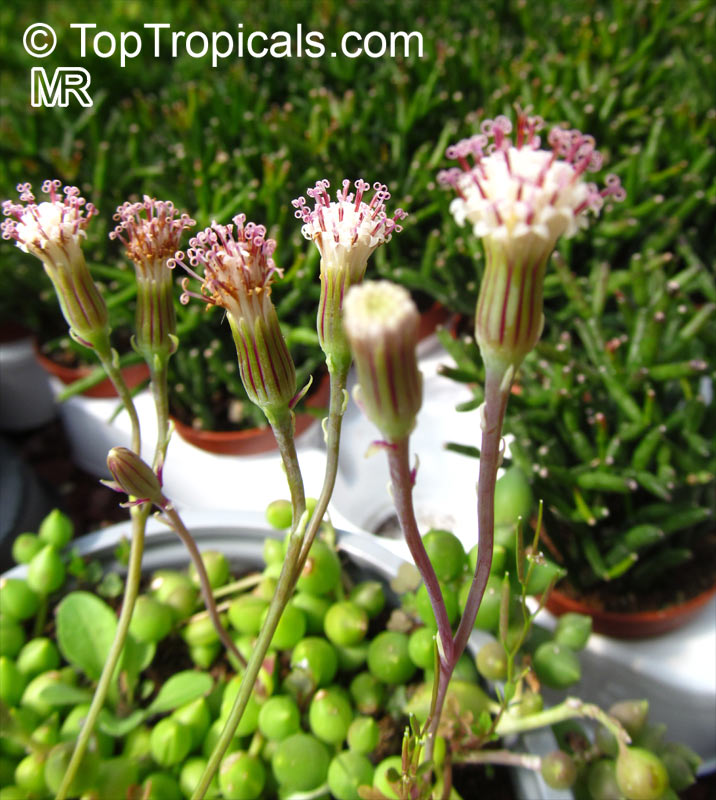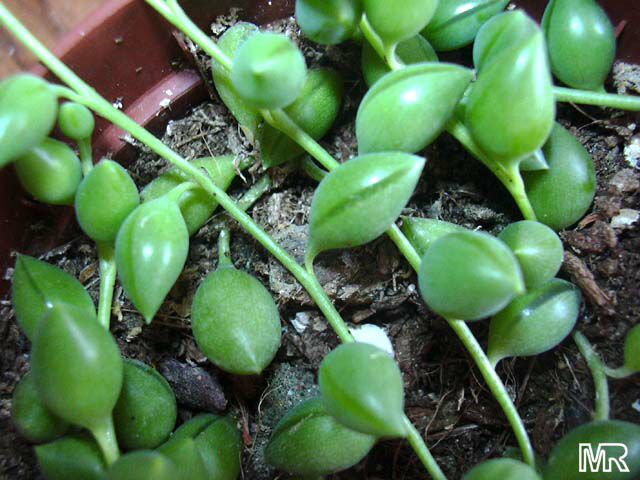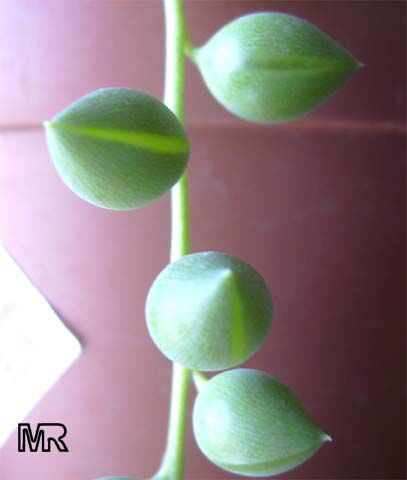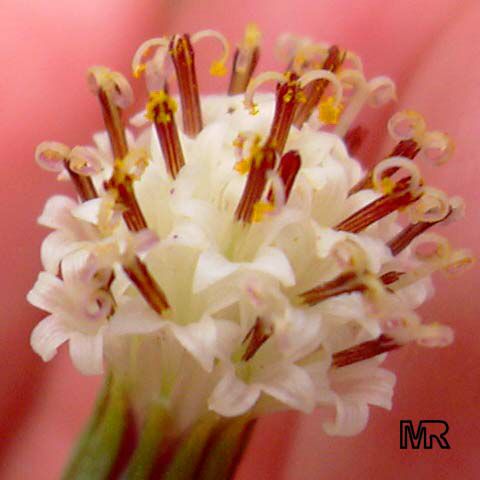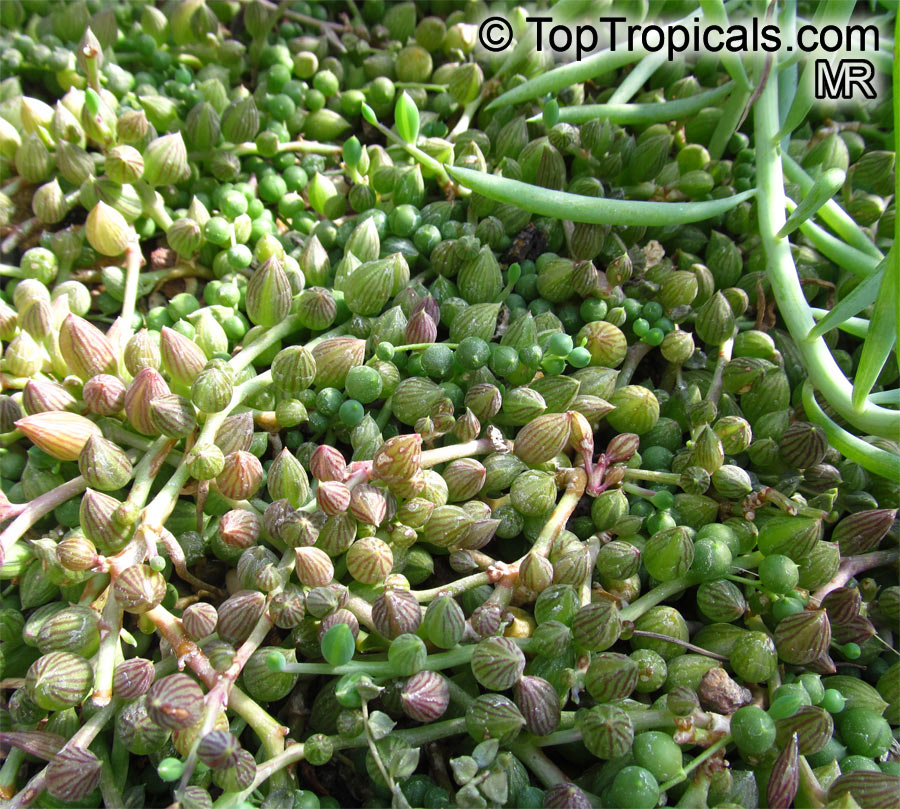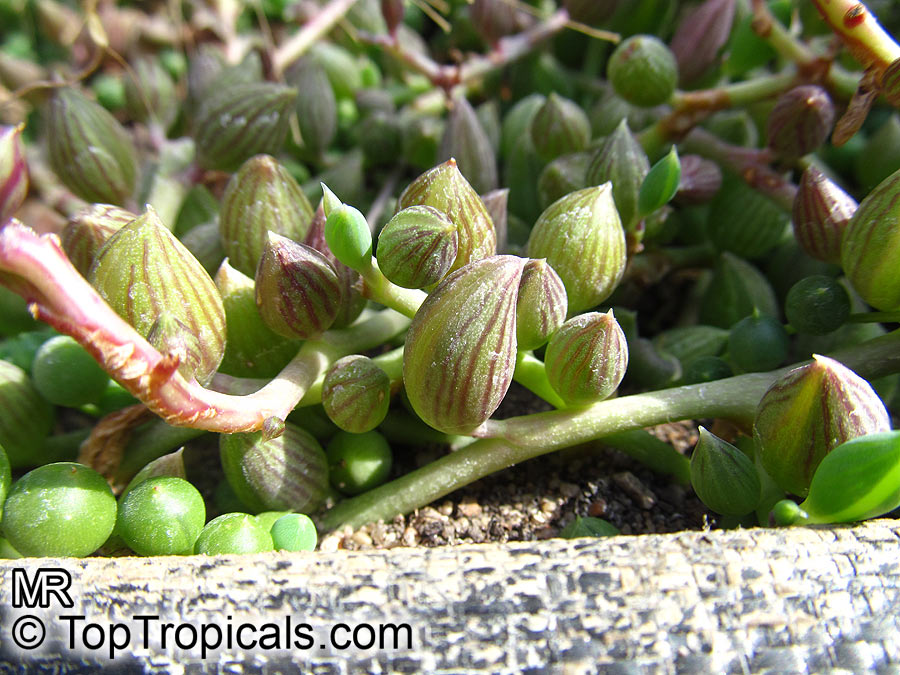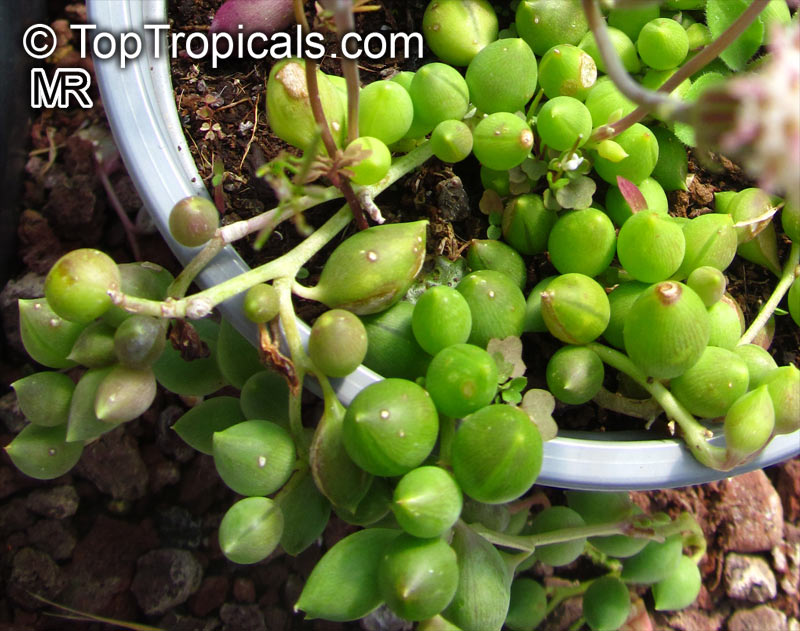Curio herreanus (Gooseberry)
Top Tropicals Plant Encyclopedia
Botanical names: Curio herreanus, Senecio herreianus
Common names: Gooseberry, String of Beads
Family: Asteraceae
Origin: South West Africa




These species are leafy succulents, in that they store large amounts of water in their leaves (as opposed to stems as do the cacti) and can withstand long periods of drought. Gooseberry leaves are football shaped and about 3/8 inch long. The unique shapes of the fleshy leaves greatly reduce the surface area exposed to the hot and dry environment, so they lose a bare minimum of the precious water extracted from the soil. The reduced surface area, however, limits the amount of the sun's energy the plants can absorb for photosynthesis. Nature's way of compensating for this limited external surface area is to have a 'window' or slit of transparent tissue in each leaf that allows light to enter and be absorbed by the photosynthetic cells lining the inside. Therefore, light absorption occurs on the outer surface as well as the inner surface. This allows the plant to produce a sufficient amount of food by photosynthesis while conserving its water. The central core of each leaf is composed of clear, non-pigmented water storage cells. See Senecio rowleyanus.
Similar plants: Curio herreanus (Gooseberry)
- Curio articulatus (Hot Dog Cactus)
- Curio rowleyanus (String of pearls)
- Curio x peregrinus (Dolphin Necklace)
- Kleinia neriifolia (Verode)
- Kleinia pendula (Tapeworm Plant)
- Kleinia stapeliiformis (Pickle Plant)
- Pseudogynoxys chenopodioides (Mexican Flame Vine)
- Roldana petasitis (Velvet Groundsel)
- Senecio angulatus (Creeping Groundsel)
- Senecio barbertonicus (Barberton Groundsel)
